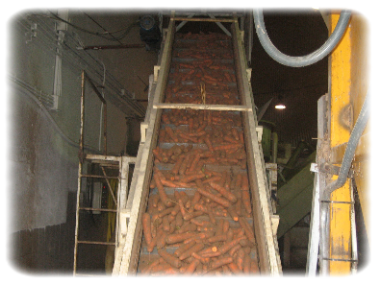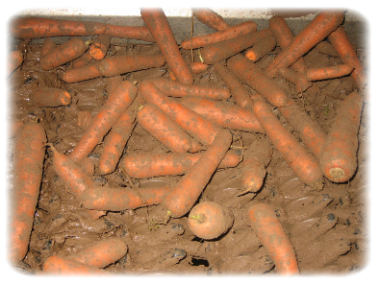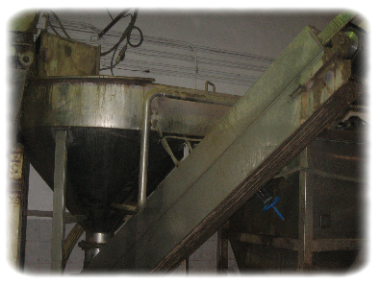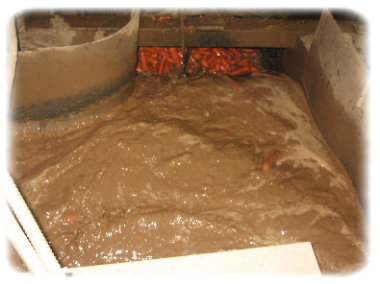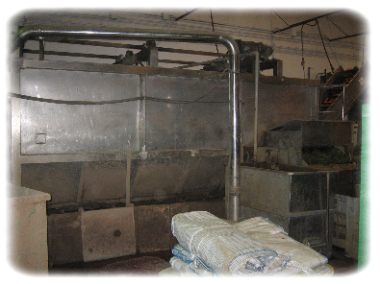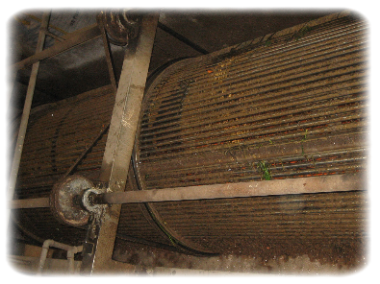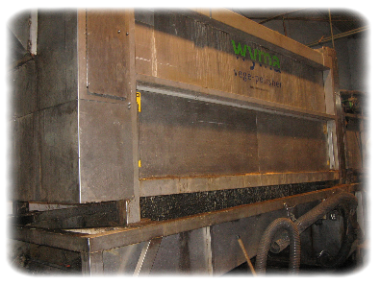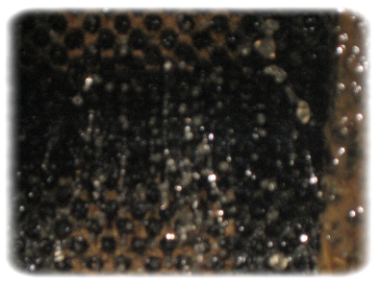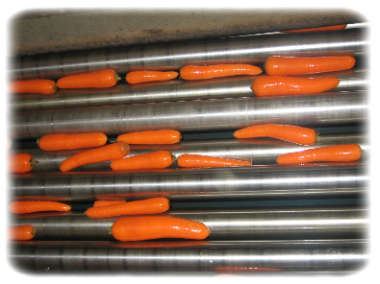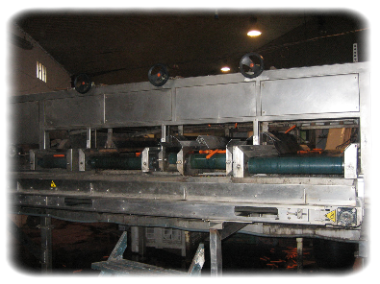We receive the sacks of carrots straight from the field. As you can see in the image, they do not look great, but we will sort that out in a minute.
The sacks are placed in a dumper that empties them into a hopper, where they are gradually moved onto another conveyor.
This conveyor carries them to the soil remover, a machine with rollers and rubber fingers that separates the loose soil from the carrots.
Once the carrots are free of loose soil, they are taken to the stone extractor, which consists of a funnel full of water with blades that spin like a mill. This mechanism uses the power of the water to separate the carrots from the stones by making the former float towards the opening in the funnel while the latter sink to the bottom due to their own weight, from where another conveyor extracts them from the funnel and into a crate.
The same water carries the carrots to the washing machine, which cleans off the rest of the mud and grass. This system consists of a water tank with a rotating drum inside. The carrots are washed by rubbing themselves against each other as well as by the actual water.
From the washing machine, the carrots go through a series of water showers with rollers that remove any remaining bits of soil or grass.
Once they are completely clean, they pass through a sieve belt where all the small or broken carrots fall through the holes.
Now is when the manual selection process takes place. The carrots move through a conveyor while our workers discard those that do not meet our quality standards.
Once the selection process is over, they go through the scrubber, a rotating drum made up of rollers with brushes that spin in the opposite direction and remove the outer layer of skin from the carrots. The scrubber gives the carrots a soft feeling, a fresh look and an intense orange colour.
After the scrubbing, the carrots undergo a hydrocooling process. They are placed on a conveyor belt that goes through a cooling tunnel at a very low speed. While in the tunnel, the carrots are constantly sprayed with water at 3º C, lowering their temperature both on the outside and the inside. They will retain this temperature throughout the rest of the process.
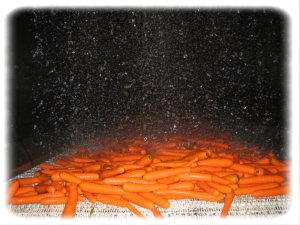
Once they have been cooled, the carrots move on to the calibrator, which has five conveyors that they fall onto depending on their size, so as to be distributed to one place or another.




